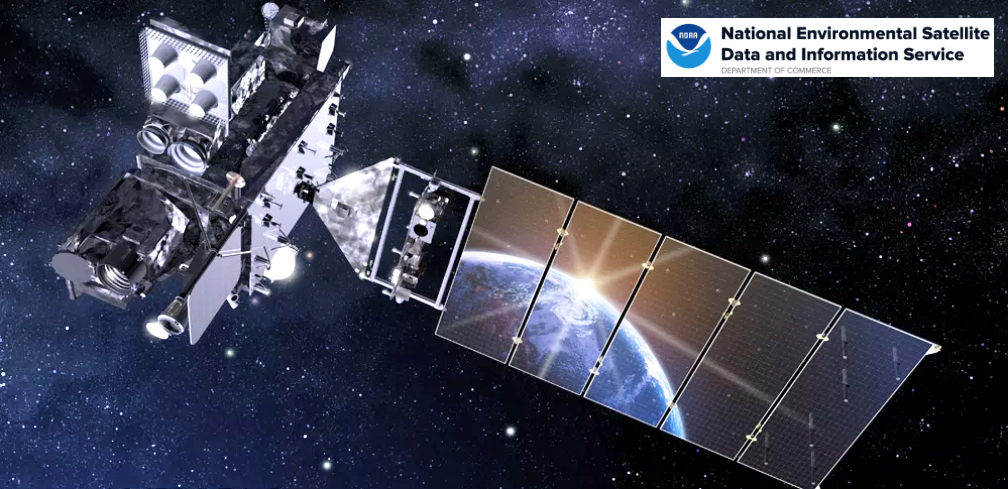
A United Launch Alliance (ULA) Atlas V rocket carrying the GOES-T spacecraft for the National Oceanic and Atmospheric Administration (NOAA) and NASA lifted off on March 1 at 4:38 p.m. EST from Space Launch Complex-41 at Cape Canaveral Space Force Station. To date, ULA has launched 149 times with 100 percent mission success.

The mission launched on an Atlas V 541 configuration rocket, which first flew in November 2011 with NASA’s Mars Curiosity rover. This configuration has launched missions for the National Reconnaissance Office, carried the GOES-R and -S satellites into space, and most recently launched the Mars 2020 mission with the Perseverance rover and Ingenuity helicopter.
The Atlas V 541 included a 17-ft (5-m) diameter short payload fairing. The Atlas booster for this mission was powered by the RD AMROSS RD-180 engine. Aerojet Rocketdyne provided the RL10C-1 engine for the Centaur upper stage and Northrop Grumman provided the Graphite Epoxy Motor (GEM) 63 solid rocket boosters.
This was the 92nd launch of an Atlas V rocket and 22nd mission launched on an Atlas V in partnership with NASA’s Launch Services Program (LSP). ULA’s next launch is USSF-12 for the U.S. Space Force from Cape Canaveral Space Force Station, Florida.
“Thank you to NASA, NOAA and our mission partners for your teamwork to launch this important mission. This successful launch adds to the GOES-R series, the Western Hemisphere’s most sophisticated weather observation and environmental monitoring system,” said Gary Wentz, ULA vice president of Government and Commercial Programs. “The Atlas V delivered GOES-T directly to a geosynchronous transfer orbit. The orbital delivery accurately placed the spacecraft closer to its final destination which conserves the satellite’s fuel supply and enables a longer mission life.”
Lockheed Martin, the manufacturer of this satellite, added…
Space and Earth weather forecasting across the Western Hemisphere just got a little boost thanks to the Geostationary Operational Environmental Satellite (GOES-T), an advanced weather satellite built by Lockheed Martin [NYSE: LMT] for the National Oceanic and Atmospheric Administration (NOAA). The satellite successfully launched from Florida’s Space Coast at 4:38 p.m. ET.

GOES-T will be renamed GOES-18 when it reaches geostationary orbit. Once operational, GOES-18 will take GOES-17’s place tracking atmospheric rivers, floods, wildfires, drought, and other severe weather and climate phenomena over the West Coast of the United States.
“GOES-T’s launch is the culmination of innovative engineering, science and strong teamwork between NASA, NOAA and Lockheed Martin,” said Jagdeep Shergill, Lockheed Martin’s GOES-R chief engineer and program manager. “With the impact climate change has on weather patterns around the world, the work of satellites like GOES-T is more crucial than ever before, to help keep people safe now and in the future.”
Advanced Monitoring of Weather, Oceans and Climate
As climate change continues to drive more frequent and severe environmental impacts, the GOES-R satellite series – of which GOES-T is the third – uses sophisticated technology to put information in the hands of those who need it most, when they need it.
Before it starts collecting and sharing critical weather data, the satellite’s journey to space began in Littleton, Colorado, where it was designed and built by Lockheed Martin engineers.
Based on Lockheed Martin’s A2100 satellite bus design, the spacecraft features two high-tech instruments built by the company’s Advanced Technology Center in Palo Alto, California…

- Geostationary Lightning Mapper (GLM), which is a first-of-its-kind operational lightning mapper flown into its orbit, tracking lightning across the U.S. in real-time. By collecting data on the frequency, location and extent of lightning discharges, GLM allows meteorologists to quickly identify intensifying storms and take appropriate action. In 2020, GLM captured a lightning megaflash nearly 500 miles long that broke the world record for longest lightning flash.
- Solar Ultraviolet Imager (SUVI), focuses on space weather and measures the sun in extreme ultraviolet wavelength range and provides solar images. SUVI is essential to understanding active areas on the sun and predicting solar events that may disrupt power utilities, communication or navigation systems here on Earth.

Over its 10-year operational lifetime, GOES-T can produce over a terabyte of data per day and monitors severe weather continuously, supporting NOAA’s mission to provide weather data to save lives.
What’s After Lift Off?
Now that it’s in space, GOES-T will undergo an on-orbit checkout of its instruments and systems before beginning official operations in January 2023.
In addition to severe weather monitoring, it will do things like:
- Identify volcanic eruptions, even ones under the ocean, like the recent event near Tonga
- Measure land and sea surface temperatures to track drought conditions and warming oceans
- Provide early alerts to emergency responders for wildfires, including those caused by lightning strikes
- Observe solar flares that could impact telecommunication on and around Earth
With three of the four GOES-R weather satellites now launched, GOES-U, the last satellite in the series, is in production and planned for a 2024 launch.
Beyond the GOES-R series, Lockheed Martin looks forward to continued partnership with NASA and NOAA as they look ahead to future weather and climate missions.
